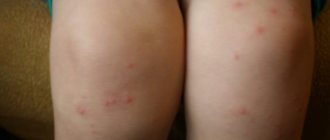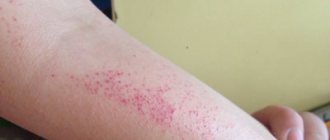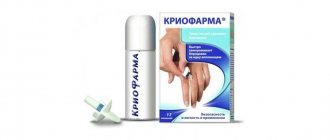Older and middle-aged people often suffer from various joint diseases. Their external manifestation is bumps on the joints of the fingers. Such growths especially cause a lot of trouble for women. In addition to spoiling the appearance of the hand, lumps can be extremely painful and limit joint mobility. Timely treatment can stop joint deformation and alleviate the patient’s condition.
Causes of growths on the joints of the fingers
Deformation of the small joints of the hands is the most common complaint of patients when visiting an orthopedist or rheumatologist. Seals can form on one joint or on several. Often they are completely painless and cause only aesthetic discomfort, but over time they can begin to increase in size. This leads to curvature of the fingers and limited functionality of the hand. Why do growths appear and what are their features?
The cause of such deformities is most often the age of the patient. Bumps on joints occur especially often in people over 48-50 years of age, although they can also appear in younger people. In this case, they form after suffering bruises and fractures of the fingers.
In addition, thickenings and growths on the phalanges are often symptoms of joint diseases. They are characteristic of the following pathological conditions:
- arthrosis;
- arthritis (inflammatory or degenerative origin), osteoarthritis;
- rheumatism;
- gout.
A predisposing factor to the formation of bumps on the fingers can be metabolic disorders, increased weight, an unbalanced diet, diabetes mellitus and other endocrine diseases.
If subcutaneous growths and nodules appear in the area of the phalanges, you should immediately consult a specialist to determine the causes of this pathological phenomenon.
Video “Bump on the thumb”
This video explains how to get rid of a painful growth.
You can determine a person’s age and internal state by looking at their hands. If bumps or growths appear on the joints of the fingers, this is a signal that you need to consult a specialist and undergo diagnostics to identify the cause.
All formations in the form of lumps or growths on the joints of the fingers make the hands unsightly and cause discomfort to a person. But beauty is one thing, but a disease of the human skeletal system or a benign tumor, which may be the cause, is another.
Types of growths on fingers
To thoroughly understand why bumps form, you should consider in more detail the most common forms of growths, their features and location.
Bouchard's and Heberden's nodes
Such formations appear against the background of arthritis or arthrosis. They are a manifestation of degenerative-inflammatory changes in the joints and look like dense, often painless subcutaneous growths. Pain, swelling, redness of the skin and itching appear during an exacerbation. Symptoms can be controlled with medications.
Heberden-Bouchard nodes form on the fingers against the background of arthritis or arthrosis
Such bumps usually grow in older women, noticeably deforming and bending the fingers. The main causes of the formation of Bouchard and Heberden's nodes are considered to be age-related changes, hereditary predisposition to joint diseases, injuries or hypothermia of the upper extremities.
The deformity most often affects the index or middle finger. The little finger suffers a little less often. Arthritis nodules practically do not form on the thumb.
It should be noted that this defect cannot be eliminated. Once it appears, it will remain forever.
Hygroma
A lump filled with fluid is called a hygroma, or synovial cyst. The growth usually appears on the middle finger next to the nail.
The defect most often occurs as a result of repeated injuries to the fingers or constant physical stress on the joints of the hands, for example, when working as a massage therapist.
Hygroma is characterized by thinning of the skin at the site of growth and deformation of the nail. The cyst does not cause any particular pain, but sometimes it is desirable to remove it.
Hygroma - a lump filled with fluid
Bumps on the joints of the hands of students
Many schoolchildren and students may notice a lump on the upper phalanx of the middle finger. The painful defect is formed from constant use of the pen and is a callus.
The seal can be completely invisible or quite large, distorting the joint. This growth does not require special treatment. It is enough to choose a softer handle body. Changes in the joint will go away on their own when the load on the finger decreases. But this is a long process that can take several years.
Treatment of hygroma
The choice of therapeutic method for treating the cyst is based on the clinical findings of the examination and the degree of complication of the disease. To treat hygroma on the finger, different techniques are used:
- Conservative methods. They consist of the introduction of glucocorticosteroids into the cyst cavity, the use of non-steroidal anti-inflammatory drugs, antibiotics, antihistamines, corticosteroids, muscle relaxants and topical ointments.
- Physiotherapy. Involves the use of mud and paraffin applications, electrophoresis, phonoresis and hydrocortisone, UV irradiation, heat and compression bandages, massage.
- Surgical removal or burectomy. Indicated in advanced situations in the presence of severe pain during mechanical movement of the phalanx, rapid growth of the cyst and its proliferation, numbness and immobility of the finger. The operation is performed under local anesthesia and takes no more than 30-40 minutes.
- Puncture or puncture. Provides for pumping out the liquid contents of the capsule and introducing the drug into the free cavity.
- Laser evaporation. The principle of the technology is the same as for strip surgery, but using a laser instead of a scalpel.
Crushing, although a simple method, is not the most effective. Due to its obsolescence, this technology is practically not used.
During the course of treatment and the rehabilitation period, it is not recommended to put pressure on the sore finger in order to prevent re-accumulation of fluid and the formation of new cyst fractions. For this reason, when a hygroma is diagnosed, sick leave is long.
Treatment methods for growths on the joints of the hands
For treatment to be effective, it is necessary to correctly determine the cause of finger deformities and begin therapy in the early stages of the disease. That’s why you shouldn’t delay getting specialist advice. Self-medication will not help in this case. The doctor will analyze the results of an X-ray examination, MRI data, general and biochemical blood tests, puncture, and biopsy. Based on the data received, he will make the correct diagnosis and prescribe specific treatment.
Drug therapy
Modern medicine has a large number of effective drugs to eliminate joint pain and the progression of the formation of growths.
Causes of bumps
The appearance of growths on the index, thumb or other fingers of the hand can cause the following diseases:
- Arthritis is inflammation of the joints. Polyarthritis differs from normal arthritis in that it affects several joints at once. Inflammation occurs due to disruption of the cartilage structure, trauma, and low temperatures. A separate class of arthritis is infectious.
- Arthrosis is a degenerative-dystrophic destruction of the joint. Occurs due to poor circulation and microscopic injuries. The capillaries stop carrying blood to the joint, and its natural regeneration stops. Loads destroy cartilage tissue, bones experience friction. Because of this, spine-like processes grow on the edges of the bone, further deforming the cartilage.
- Gout is a rare disease now, but it is difficult to cure. There are two reasons for the occurrence of gout - poor kidney function or abuse of meat and alcohol. The joints become inflamed and swollen, and so-called tophi is formed. Treatment requires modern drugs that remove urinary crystals from the body.
- A synovial cyst or hygroma is a benign neoplasm filled with thick fluid from the inside. Visible even visually through the skin, it has a pale shade of pink. It is easiest and most effective to treat hygroma using surgical methods. During self-diagnosis, patients often confuse an articular cyst with a malignant tumor.
- Keratosis is severe roughening of the skin on a joint. The causes are heredity, insufficient blood circulation, burns, and constant friction. It may occur against the background of vitamin deficiency or a poorly combined diet.
Who is affected?
Bumps on the fingers grow in patients after 40 years of age, risk factors are:
- hormonal changes;
- metabolic disorders, for example, diabetes;
- excess body weight;
- unhealthy diet;
- alcoholism, especially beer;
- smoking, other bad habits;
- high blood pressure;
- renal failure;
- stones in the kidneys;
- traumatic injuries;
- great tension on the phalanges;
- abuse of meat and fish, seafood, legumes;
- exposure to low temperatures;
- stress, psychological tension.
In most cases, bumps on the fingers in the joint area actually appear in patients over 45–50 years of age. This is due to age-related changes and the processes that occur in the human body during aging. The following reasons can provoke the appearance of growths on the fingers:
- hormonal disorders (for example, bumps are often diagnosed in women during menopause);
- metabolic diseases (diabetes mellitus);
- poor diet, excessive consumption of salty foods;
- alcohol abuse;
- hand injuries in the joint area;
- kidney pathologies, high blood pressure.
There are also growths that are papillomas or calluses in origin, and in appearance they look like rough bumps, like gout. Typically, the growths do not bring much discomfort to patients, but when pressed they can hurt and become inflamed when the underlying disease worsens.
Keratosis
Keratosis, or keratinization of the skin, also provokes the appearance of growths on the joints. The surface of the fingers on the joints becomes rougher and harder, the layers of skin in this area are subject to necrosis, and the surface layer becomes coarser.
Since the cracks are localized on the folds, every movement provokes pain. The disease is most often observed in those people whose professional activities involve fine motor skills of the hands. Keratosis of the knuckles affects shoemakers, who are forced to do many operations manually, and other professionals involved in manual labor who have direct contact with sand or resins. This may even threaten the development of cancer.
Keratosis can appear as a result of a chemical burn, genetic diseases, nutritional deficiencies, or problems with the functioning of the endocrine glands. The disease appears as a defensive reaction in patients who eat allergenic substances. The result of keratosis is the appearance of rough calluses on the joints of the fingers.
Therapy for keratosis directly depends on the reason for the growth on the joints. The most difficult thing to remove is a growth caused by exposure of the skin to toxic industrial substances. Such keratoses may last as long as the patient has contact with the chemical.
ADVICE. If the skin becomes rough and a callus grows for no apparent reason and there is no impact of negative factors on it, then patients need to pay attention to their diet. It is possible that this is caused by a lack of foods that need to be included in the diet.
Locally, you can use fortified preparations - creams, ointments, hand lotions with a softening effect, which will help get rid of the manifestations of keratosis. They lubricate your hands regularly, since it will not be possible to quickly get rid of the seals. If there is no result, it is possible to remove the growth surgically.
Heberden's nodes and Bouchard's nodes
Bumps on the joints of the fingers, which are caused by polyosteoarthrosis, are called Heberden's nodes and Bouchard's nodes. The reasons for their appearance are a degenerative process in the joint, and in fact the nodes themselves are distal interphalangeal arthrosis of the fingers.
More than two centuries ago, this phenomenon was noticed and described by the scientist Heberden, by whose name this disease is now called. Nodules may also appear on the proximal parts. They are called Bouchard's nodes.
REFERENCE. The disease primarily affects the joints of the fingers of women. For every ten female patients suffering from this disease, there is only one male patient. Doctors associate this frequency with the characteristics of the female body, because polyosteoarthrosis often develops against the background of menopausal hormonal changes, and the appearance of knobbiness on the fingers occurs precisely at 50–60 years of age. Progression of the disease in both sexes develops over the age of eighty years.
Pain when bending fingers
- genetic predisposition;
- hormonal disbalance;
- overweight;
- excessive activity of lysosomal enzymes;
- thyroid pathology;
- intra-articular injuries.
There is no special diagnosis for the disease. It is enough for the doctor to conduct a visual examination of the fingers, and the diagnosis suggests itself. Externally, the nodules are dense roundness the size of a pea and can appear both on top of the fingers and on the sides, and even under the joint.
When palpated, the nodules are hard and pressure may cause pain. If the nodes become inflamed, the skin around them turns red, and the fingers may swell. The knot itself is visible through the stretched, shiny skin. During an exacerbation, patients complain of tingling in the fingers and difficulty bending.
If necessary, you can do a blood test and rheumatic tests, but they, as a rule, only confirm the diagnosis. An x-ray is taken to assess the extent of the lesion. It clearly visualizes thickenings in the area of the finger joints.
Treatment of the disease cannot be carried out without treating the underlying cause that provoked the appearance of nodules. In old age, it is extremely difficult to get rid of arthrosis, and when it turns into polyosteoarthrosis, stopping the further growth of bumps on the fingers will be a great success.
Tophi
A lump on a finger joint is not only a manifestation of arthrosis, but also evidence of long-developing gout. Gout appears in patients over fifty years of age and is the result of metabolic disorders.
Tophi with gout cause significant aesthetic discomfort
With gout, a typical symptom is a bunion, but a significant proportion of patients also suffer from tophi. They appear on the hands and often swell, which is accompanied by severe pain and redness. Exacerbation of the disease is provoked by poor nutrition, consumption of alcohol, and salty foods.
The word “tofus” itself means porous stone. Indeed, the bumps on the fingers look like porous stones, because they are compactions of fiber. The size of tophi can be either minimal or quite large.
REFERENCE. The color of subcutaneous tophi has a dirty white or yellow tint, and the consistency of the contents can be either thick, in the form of a cream, or more dense, as if powder crystals are collected in the tophi.
When the tophi become inflamed, typical processes occur - the fingers swell, the tophi turn red and become painful when touched. The ingress of pathogenic microflora threatens suppuration, and then the tophi are opened with fistulas, and in their place there are ulcers that do not heal for a long time.
Treatment of tophi is possible only by influencing metabolic processes. If gout itself is not cured, then the patient will not get rid of tophi. First of all, it is necessary to rationalize nutrition, remove salty foods, canned food, mushrooms, offal, and legumes.










